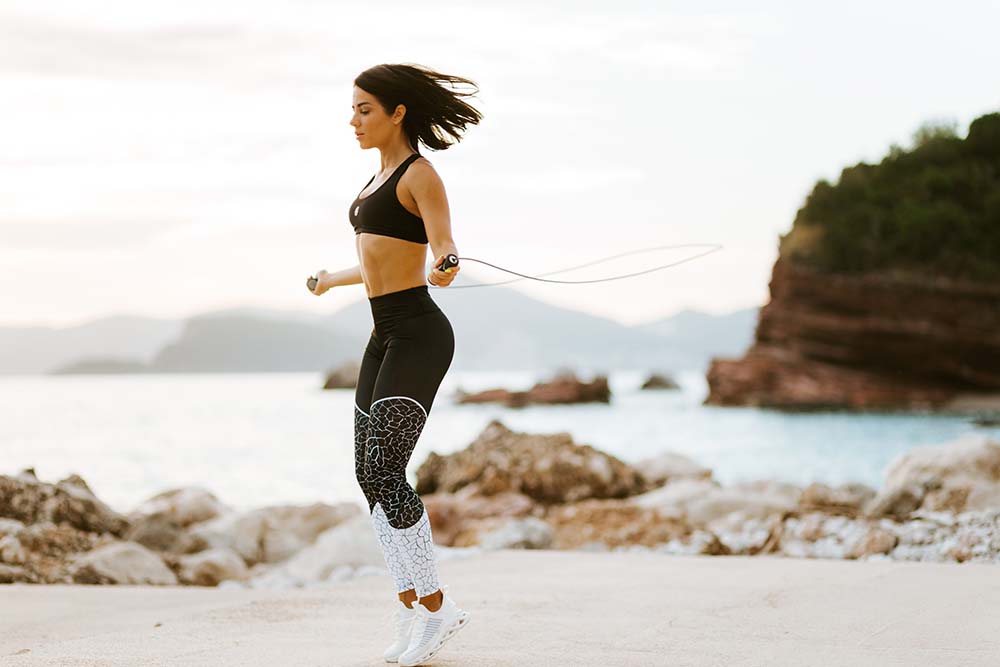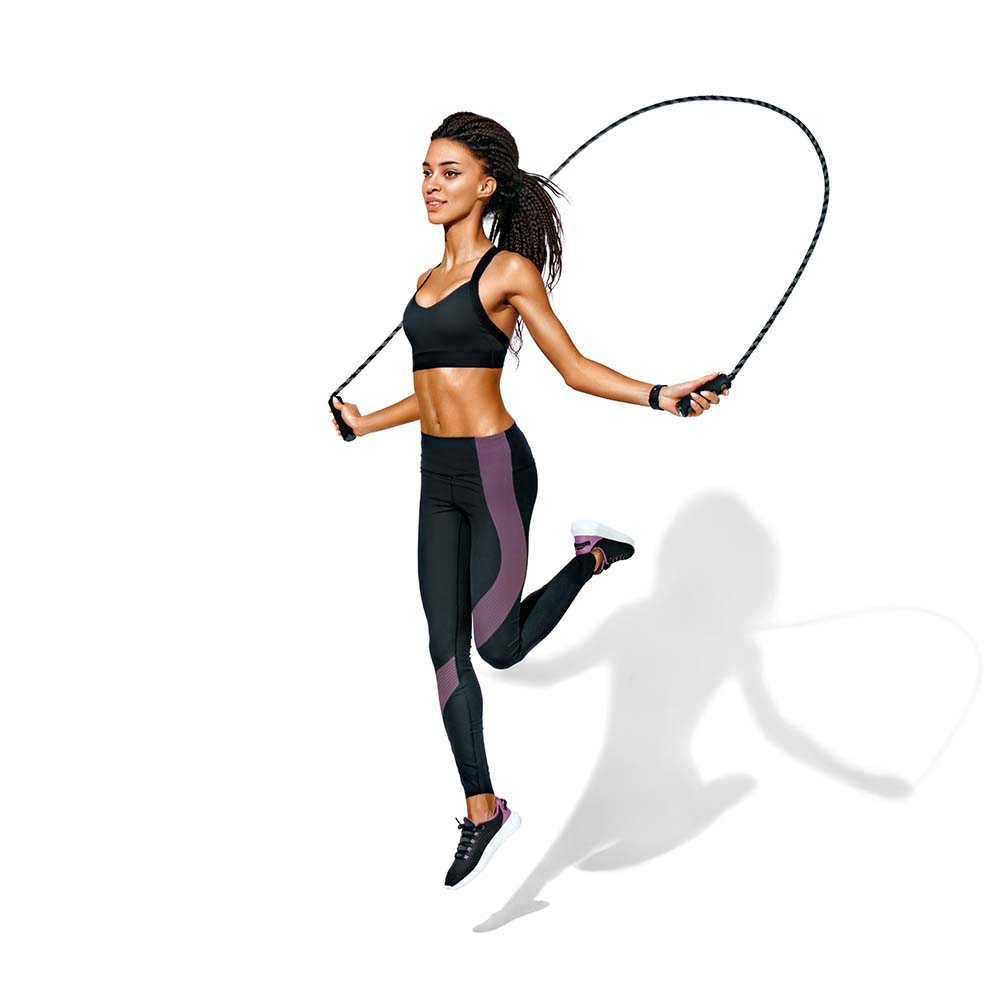Skipping, also known as jump rope, is an excellent exercise for cardiovascular health, weight loss and overall fitness. It is a low-impact exercise that burns calories, strengthens the muscles and improves coordination. Skipping benefits are numerous and can be enjoyed by people of all ages and fitness levels. In this article, we will delve into the many benefits of skipping, how to start skipping, and various skipping exercises to help you get started.
We recommend you to consult a medical expert before starting such physical exercises.
How to Start Skipping
Before starting any exercise programme, it is essential to consult with a doctor, especially if you have any health conditions or concerns. Once cleared, the first step to starting skipping is to choose the right rope. The rope should be the correct length for your height, lightweight and adjustable. To begin, stand with your feet shoulder-width apart, hold the rope handles in each hand, and rotate the rope with your wrists. Start slowly, and gradually increase your speed and intensity as your body becomes accustomed to the exercise.
10 Benefits of Skipping
● Helps in weight management
● Strengthens the muscles and improves coordination
● Improves cardiovascular health and lowers blood pressure
● Increases bone density and reduces the risk of osteoporosis
● Enhances balance and agility
● Reduces stress and anxiety
● Boosts mood and mental health
● Improves respiratory function and lung capacity
● Can be done anywhere, anytime with minimal equipment
● Fun, challenging, and suitable for all ages and fitness levels.

Precautions While Skipping
While skipping is generally considered a safe exercise, it is essential to take certain precautions to avoid injury. It is crucial to start slowly and gradually increase your intensity and speed. Wear comfortable shoes and clothes, and avoid skipping on hard surfaces like concrete. It is also important to stay hydrated, take breaks when needed and listen to your body.
Who Should Avoid Skipping Rope
Skipping is a high-impact exercise that can put stress on the joints, so it is not recommended for individuals with joint problems, knee or ankle injuries or arthritis. Pregnant women and individuals with heart or lung conditions should also avoid skipping unless cleared by a doctor.
Skipping Techniques for Beginners
If you are new to skipping, it is important to start with the basic techniques before moving on to more advanced moves. The two most common techniques are the basic jump and the alternate-foot jump. The basic jump involves jumping with both feet at the same time, while the alternate-foot jump involves jumping with one foot at a time. It is important to maintain good posture and keep your core engaged while skipping to prevent injury.
Various Skipping Exercises
There are various skipping exercises that you can do to challenge yourself and add variety to your routine. Some of the exercises include high knees, double-unders and crisscrosses. These exercises help to target different muscle groups, increase endurance, and enhance coordination.

Expert Tips on Skipping with Rope
To get the most out of your skipping routine, it is important to use proper form and technique. Some expert tips include keeping your elbows close to your sides, jumping on the balls of your feet, and using your wrists to turn the rope. It is also important to vary the speed and intensity of your skipping routine to challenge your body and avoid boredom.
Conclusion
Skipping is a fun, challenging, and effective exercise that offers numerous benefits for overall health and fitness. Whether you are a beginner or an experienced athlete, skipping can be incorporated into your fitness routine to help you lose weight and stay fit.
FAQs
Is skipping a good exercise for weight loss?
Yes, skipping is a great exercise for weight loss. It is a high-intensity cardiovascular exercise that can help you burn a lot of calories in a short amount of time.
What are some other benefits of skipping besides weight loss?
Skipping can also improve your cardiovascular health, strengthen your bones and muscles and improve your balance and coordination. It can also be a fun and stress-relieving form of exercise.
Is it safe to skip if I have knee or ankle pain?
If you have knee or ankle pain, you should be cautious when skipping. Make sure to wear supportive shoes and land softly on the balls of your feet. If the pain persists, you should talk to a doctor before continuing with skipping or any other high-impact exercise.
How long should I skip each day?
If you're just starting out, it's best to start with shorter sessions of around 5-10 minutes and gradually build up to longer sessions of 20-30 minutes. It's important to listen to your body and not overdo it.
Can skipping help reduce stress and anxiety?
Yes, skipping can be a great way to relieve stress and anxiety. The rhythmic motion of jumping can be meditative and can help release endorphins, which are natural mood boosters.
What should I wear when skipping?
When skipping, it's important to wear comfortable, supportive shoes that fit well and have good cushioning. You should also wear loose, comfortable clothing that allows you to move freely.
Can skipping help improve my posture?
Skipping can help improve your posture by strengthening your core muscles and improving your balance and coordination. However, it's important to make sure you're maintaining proper form and not slouching when skipping.